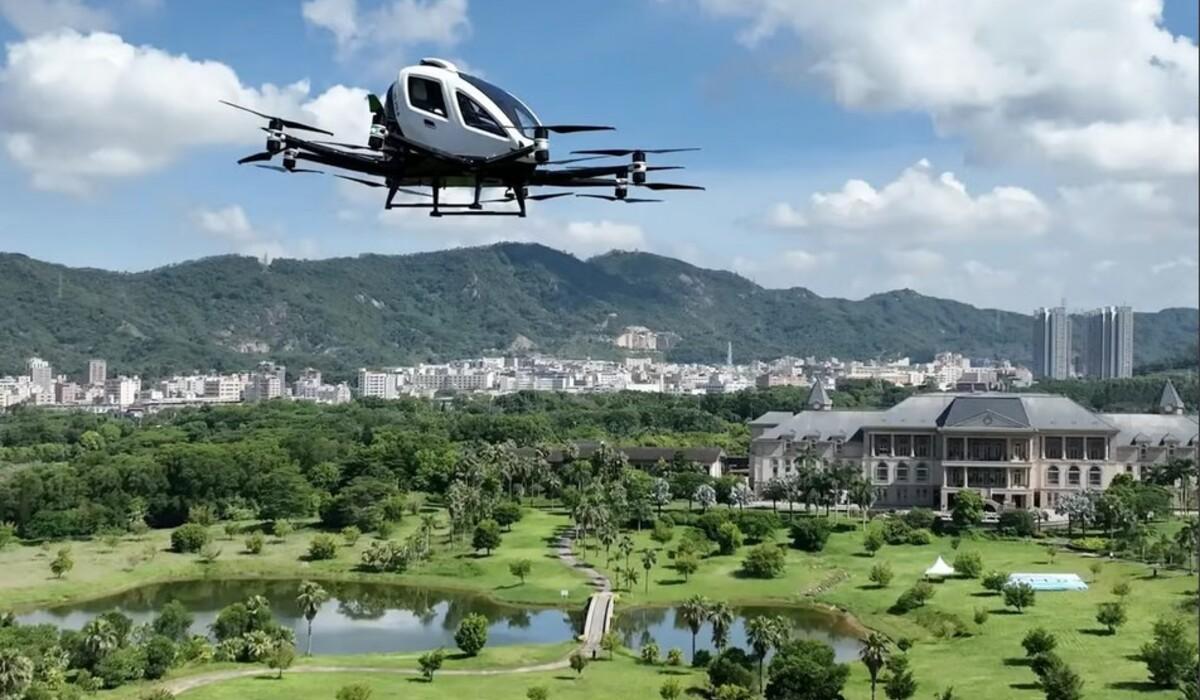In 2016, eHang unveiled a groundbreaking concept at CES – a small autonomous passenger-carrying octacopter. Seven years later, this idea has evolved into the world’s first fully certified eVTOL (electric vertical takeoff and landing) air taxi, known as the eHang EH 216. This innovative aircraft is authorized for commercial air taxi operations in China, marking a significant milestone.
The eHang EH 216 is a compact and efficient vehicle with eight pairs of coaxially mounted propellers, totaling 16. It can autonomously transport two passengers up to 30 kilometers at a top speed of 130 kilometers per hour. While its specifications are modest compared to some other eVTOLs, it is well-suited for short, city-bound trips and scenic tourist flights.
“I extend my heartfelt gratitude to CAAC, the expert team, and all EHang employees for their unwavering dedication,” said eHAng Founder, Chairman and CEO Huazhi Hu in a press release. “Our self-developed EH216-S passenger-carrying UAV system has finally met high expectation to secure the first TC in the global eVTOL industry, marking a significant chapter in civil aviation history.
“Embracing the TC as our springboard, we will launch commercial operations of the EH216-S unmanned eVTOLs, prioritizing safety above all. This will enable us to steadily progress towards our strategic goal to be a UAM platform operator, and commit to our mission to enable safe, autonomous, and eco-friendly air mobility accessible to everyone.”
What sets this achievement apart is the speed at which it was accomplished. The certification from the Chinese Civil Aviation Authority has occurred much earlier than anticipated, providing eHang with a considerable advantage. The vehicle is fully autonomous, whereas most other air taxis being developed require human pilots.
This certification doesn’t substantially alter eHang’s operations, as they’ve been conducting passenger “demonstration flights” in China for years. However, it does allow them to start generating revenue, expanding their manufacturing, and scaling their commercial ride services. This puts them ahead of competitors in the emerging air taxi industry.
There are concerns about the safety of such accelerated progress, especially given China’s controlled media landscape. Still, the eHang EH 216 has undergone rigorous testing, including over 40,000 test flights. Additionally, eVTOLs rely on well-established technologies like batteries, electric motors, and propellers, and they incorporate redundancy in their design, making them safer than traditional aircraft.
This quick progress in China raises questions about the pace of development in the eVTOL sector globally. While some argue that this accelerated approach makes sense, it’s essential to remember the importance of safety regulations and standards, given the history of aviation accidents shaping these rules.
The certification of the eHang EH 216 in China marks the dawn of electric VTOL flight. It signifies a shift toward commercial eVTOL flights, and the world is eagerly observing how this innovative mode of transportation will impact urban mobility and what lessons China’s accelerated approach might offer to the rest of the world.

